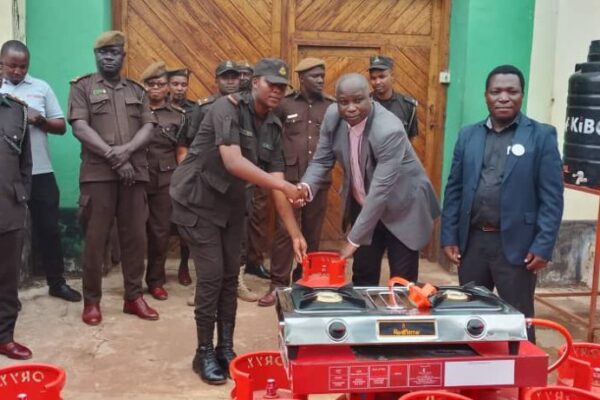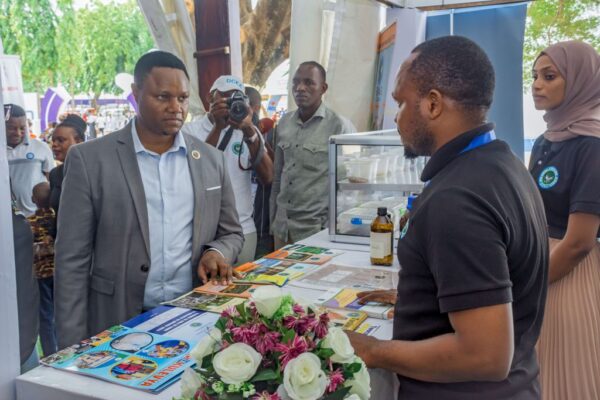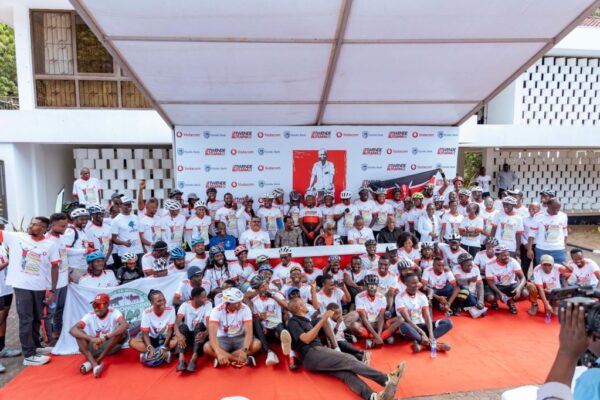Africa’s waterways support the lives of millions, supplying water for agriculture, enabling trade, and sustaining daily survival while connecting communities and economies. Yet, these lifelines are caught in disputes as growing populations, rising resource demands, and the legacy of colonial-era borders create more friction over access and control.
1. Introduction.
Water is life, but access to it is often a battle, and in Africa, this battle is emerging more visibly as its freshwater resources become more fiercely contested. The continent’s lakes, rivers, and wetlands sustain millions of people by providing resources for drinking, agriculture, and energy. These resources nourish the fields that feed nations, energize the turbines that power industries, and provide for the most basic human needs. However, their role goes far beyond survival, touching upon matters of national interests, sovereignty, and regional stability. As the demand for water increases with Africa’s rising population, the strategic value of these freshwater resources continues to gain importance. Their control is not just about securing access but also about safeguarding national security, political autonomy, and economic dominance in a region where water scarcity is felt.
The continent’s lakes, rivers, and wetlands often cross national borders, which ties them closely to economic stability, political power, and territorial claims, making their control strategically important. These resources bring about competition between neighboring countries over who has the right to access and use them. Political tensions rise when these waters are viewed not just as a source of sustenance, but as a tool for power and control. As disputes become more heated, these freshwater resources become arenas for survival, asserting power, and maintaining stability and prosperity. National sovereignty is tested when upstream nations build dams or divert water, affecting downstream nations’ access. To make matters worse, the discovery of valuable oil and gas reserves in some contested areas is a volatile mix, as countries push for control over both water and energy resources, and conflicts become even more likely.
The difficulties surrounding contested waters are increased by climate change, population growth, overuse of resources, and outdated colonial maps or agreements, leading to shrinking water supplies, erratic weather patterns, frequent droughts, and distorting territorial claims. These pressures make fair resource-sharing more urgent, yet regional cooperation frameworks often fail as nations concentrate on immediate needs over shared agreements and understandings. Securing water for booming populations, agriculture, and industries raises the risk of conflict, and governments are urged to rethink water management strategies, as the future of shared freshwater resources hangs in the balance.
Tackling these issues requires diplomatic efforts and cooperation between nations. Diplomatic negotiations are necessary to prevent growing tensions over water resources, which could lead to water wars or inflame existing conflicts, resulting in a full-scale water crisis that threatens regional stability. Poor management of these freshwater resources could lead to armed conflict, as nations compete for access to decreasing supplies, turning shared resources into points of division. However, through collaboration and mutual agreements, contested waters can be transformed into opportunities that benefit everyone. If managed wisely, these resources can be a solution to peace for the continent’s future.
2. History of Africa’s Waters.
Africa’s contested waters are a representation of the continent’s long history and changing political reality. Throughout the centuries, disputes over water resources such as rivers, lakes, and wetlands have affected regional relations, often tied to the colonial legacy and later independence struggles. Historically, European colonial powers drew arbitrary boundaries, dividing the continent’s water bodies without regard for natural ecosystems or the communities reliant on them. This division sowed seeds of conflict as neighboring countries competed for access to these resources, causing disputes that continue to simmer. The legacy of these historical injustices, alongside varying levels of development, continues to stir disagreements over water rights and usage within the continent.
The Scramble for Africa, which began in the late 19th century, muddled the management of transboundary waters. European powers used strategic waterways as tools for expanding their empires, often disregarding the natural geography and the indigenous communities that relied on these waters. The 1884-1885 Berlin Conference set out rules for colonial territories, but these were often violated, escalating conflicts over resources. In areas like the Great Lakes region, the artificial borders drawn by colonial powers remain a source of tension, with states invoking these historical boundaries in their contemporary disputes over water and land.
In the post-colonial era, Africa’s contested waters remain a source of tension. Disputes persist despite international agreements such as the 1997 United Nations Convention on the Law of Non-Navigational Uses of International Watercourses, the 1992 United Nations Convention on the Law of the Sea (UNCLOS), and regional frameworks like the 2000 SADC Revised Protocol on Shared Watercourses. Efforts by the African Union’s African Ministerial Council on Water (AMCOW) and various river and lake basin organizations have sought to ease tensions, yet political disagreements and economic imbalances continue to create obstacles. While diplomatic negotiations and international bodies contribute to resolving these disputes, competing national interests and resource demands make cooperation difficult.
2.1. Water Scarcity in Africa.
Africa’s water resources, including its major lakes and river systems, are becoming sources of contestation due to climate change, water scarcity, and geopolitical tensions. Despite being home to over 1.4 billion people, access to safe drinking water remains a difficulty, with approximately 85% of the population lacking access to safely managed water sources. As a result, 13 African nations face water insecurity, and many are failing to meet water-related sustainable development goals (SDGs). The continent is the most water-insecure region globally, with vast areas including the Sahel and Horn of Africa, experiencing extreme water shortages leaving many in poverty and food insecurity.
Water shortages are becoming a bigger problem as climate change brings more droughts, unpredictable rainfall, and flooding. Though Africa is responsible for only a small portion of global greenhouse gas emissions, it is warming faster than the global average, reducing the availability of water for its people. With prolonged dry spells becoming more common, agriculture and daily life are affected. The Horn of Africa has been hit hard, now facing its worst drought in 40 years, displacing millions and pushing communities into famine. In the Sahel, similar conditions have led to violent clashes between farmers and herders competing for land and water. Resource disputes have long destabilized the region, with the Darfur conflict often cited as the first tied entirely to climate change. Beyond basic needs, unreliable water access threatens social and political stability, as seen in Madagascar from 2018 to 2022, when an extended drought greatly reduced food production and was part of the unrest.
With Africa’s increasing population, the demand for water will only go up, piling more pressure onto already strained resources. The connections between climate change, water scarcity, and conflict become even more difficult to ignore, making long-term solutions necessary. Securing water resources requires large-scale investments in climate adaptation and the development of reliable infrastructure. However, many African nations struggle to secure the necessary funding, making it difficult to implement effective solutions. Debt crises and economic instability further limit their ability to improve water management systems, leaving millions vulnerable to displacement, poverty, and conflict. Without proper planning and sustained international support for infrastructure development, resource management, and climate adaptation, the continent will continue to experience cycles of drought and instability.
3. Rivalry Over Africa’s Shared Waters.
Water in Africa is more than a basic necessity. It is the pulse of life, a source of livelihood, and the backbone of economic and environmental systems. However, the continent’s shared water bodies have become battlegrounds of intense rivalry, where historical claims, political tensions, and modern demands collide. Rivers and lakes that cross borders offer opportunities for agriculture, fisheries, and energy production, yet they also spark disputes over ownership, usage rights, and fair access. The recent discoveries of oil and gas reserves beneath lakes have added another layer to these struggles, as nations compete for control over these resources, further entangling national interests with the ongoing battles over water, and nations often view control over water resources as necessary to defend their national security.
Rivalries over Africa’s shared waters have long been part of history and continue to affect present-day conflicts. Colonial-era treaties, often favoring certain nations, remain a source of contention, as others push for renegotiation to reflect current realities. The construction of large-scale dams and irrigation projects has kept these tensions alive, with nations accusing each other of restricting water flow or altering ecosystems to their disadvantage. Climate variability further unsettles these disputes, as unpredictable rainfall patterns and prolonged droughts increase the strain on already fragile agreements. In regions where water scarcity breeds geopolitical rivalries, access to shared rivers and lakes is not just a question of resource management but a matter of survival, pulling neighboring states further apart.
Struggles over shared lakes present a different set of challenges, where boundaries drawn on maps do not always match historical usage or local understandings of territorial waters. Disputes often arise when one nation claims sovereignty over an entire lake or asserts control over fisheries and mineral deposits, leaving neighboring countries contesting their rights to access and benefit from the same waters. Conflicting interpretations of colonial-era agreements, along with competing economic interests, fuel diplomatic standoffs that sometimes escalate into greater tensions. In some cases, communities that have relied on these waters for generations find themselves caught between national policies and changing claims, further hindering efforts to reach a durable solution.
3.1. Power over the Nile.
The Nile River, stretching over 6,600 kilometers and traversing 11 countries, has been an artery for millions in northeast Africa. Its two main tributaries, the White Nile and Blue Nile, originate from South Sudan and Ethiopia respectively, converging in Khartoum, Sudan, before flowing north into Egypt and the Mediterranean Sea. Historically, Egypt enjoyed hydro-hegemony over the river due to treaties of 1929 and 1959, which allocated it the majority of the Nile’s waters and veto rights over upstream projects. However, this dominance has waned in recent years due to Egypt’s political and economic instability, combined with altered regional power relations as upstream nations challenge these historic agreements.
Upstream countries, including Ethiopia, Kenya, Uganda, Tanzania, Rwanda, and Burundi, argue that the colonial-era treaties excluded them and fail to meet their water needs for agriculture, domestic use, and hydropower. In response, these nations have rallied under the Nile Basin Initiative (NBI), established in 1999 to support fair water management and cooperation among the Nile Basin states. The NBI’s Cooperative Framework Agreement, signed by several upstream nations, calls for fair water usage but faces opposition from Egypt and Sudan, who fear any changes to the status quo would jeopardize their water security.
The Grand Ethiopian Renaissance Dam (GERD) alters the balance of power in the Nile Basin. As the largest hydroelectric project on the Nile River, GERD has a reservoir of 1,875 square kilometers, holding 74 billion cubic meters of water, with an estimated production of 15,700 GWh per year. It promises to double Ethiopia’s electricity generation, allowing the country to supply excess power to neighboring nations. However, GERD has raised serious concerns in Egypt and Sudan, who fear disruptions to their water supply, with Egypt warning of economic distress, electricity shortages, and reduced agricultural productivity. Multiple negotiations have sought to mediate these disputes, but tensions remain unresolved.
The dispute over the Nile’s waters is an example of Africa’s wide-ranging challenges in managing shared resources as nations pursue different goals. The river, once a source of connection for ancient societies, has turned into a point of tension in modern conflicts, making clear the need for creative and cooperative governance systems. Efforts like the NBI and ongoing diplomatic talks are required to find a stable solution that supports both upstream growth and downstream water needs, keeping the river as a shared asset for all the countries it flows through.
3.2. Lake Chad.
Once one of Africa’s largest freshwater lakes, Lake Chad has become a clear case of water scarcity and regional conflict. The lake, shared by Chad, Niger, Nigeria, and Cameroon, has shrunk by over 90% since the 1960s, primarily due to climate change, overuse, and poor water management. Previously covering 25,000 square kilometers, Lake Chad now struggles to support the livelihoods of over 30 million people who depend on its waters for agriculture, fishing, and livestock. This severe reduction has increased competition for shrinking resources, escalating conflicts among local communities and even nations. In December 2021, Cameroon faced a violent dispute between fishermen and herders near its border with Chad. The clash over access to limited water resources resulted in 22 deaths and displaced over 100,000 people. The water shortage has also thrown food insecurity and unemployment into crisis, creating a breeding ground for extremist groups like Boko Haram, which have further destabilized the region.
In response to the lake’s alarming situation, proposals such as the Transaqua Project, which seeks to divert water from the Congo Basin to replenish Lake Chad, have been put forward. While the idea is promising, it faces serious financial, environmental, and political challenges. Meanwhile, regional organizations like the Lake Chad Basin Commission (LCBC) have worked to support responsible water use and cooperation between the countries in the basin. However, the scale of the crisis, which involves ecological degradation, regional security, and socioeconomic hardships, requires a far-reaching approach. The fate of Lake Chad is a stark reminder of the interconnectedness of Africa’s water issues and the urgent need for coordinated and collaborative efforts to prevent further disasters.
3.3. Lake Edward.
Straddling the border between the Democratic Republic of Congo (DRC) and Uganda, Lake Edward covers around 2,300 square kilometers and supports local communities relying on fishing, agriculture, and fresh water. It is part of Virunga National Park, a UNESCO World Heritage Site, home to a variety of species. Since early 2018, disputes between Uganda and the DRC have emerged over the lake’s energy resources, heaping more problems onto issues like overfishing, pollution, and unregulated cross-border activities. The situation has strained relations between the two nations.
Adding to the turmoil, Lake Edward lies within a region affected by political instability and armed conflict. Militia groups operating near the lake have disrupted fishing activities, increasing food insecurity and threatening the livelihoods of vulnerable populations. These groups often engage in illegal fishing, further destabilizing the area and making it harder for local fishermen to do their work. The threat of violence and territorial control by armed groups has made it harder for communities to sustain themselves, casting a shadow over both environmental and geopolitical issues. While joint efforts like the Greater Virunga Transboundary Collaboration aim to resolve these problems, the combination of environmental, security, and economic concerns keeps the lake involved in disputes over Africa’s shared waters.
3.4. Lake Albert.
Situated along the border of Uganda and the Democratic Republic of the Congo (DRC), Lake Albert not only provides freshwater resources but also holds considerable oil and gas deposits, with reserves estimated to exceed one billion barrels. With an area of approximately 5,300 square kilometers, the lake supports millions of people through its fish supply while also acting as a route for regional trade. Yet, the discovery of oil in the Albertine Rift has increased economic and geopolitical tensions. Uganda has launched ambitious projects to tap into these resources, including the East African Crude Oil Pipeline (EACOP), designed to transport oil to international markets. Meanwhile, disputes over cross-border management and resource control have further complicated the situation.
Despite the promise of economic gains, oil exploration around Lake Albert raises environmental and social concerns. There is unease over possible oil spills, habitat destruction, and the displacement of local communities. What’s more, disagreements over revenue-sharing and border demarcation have at times put relations between Uganda and the Democratic Republic of the Congo on edge. Environmentalists and activists are calling for stronger safeguards to protect the lake’s biodiversity and the livelihoods that depend on it. As efforts continue to balance economic interests with environmental responsibility, Lake Albert remains a point of contention in discussions on the management of Africa’s shared waters.
3.5. Lake Nyasa.
Tanzania and Malawi share one of the world’s largest lakes, Lake Nyasa, also known as Lake Malawi, a body of water known for its crystal-clear depths and extraordinary biodiversity. A long-standing territorial dispute between Malawi and Tanzania over its northeastern waters stems from colonial-era boundary definitions, especially the Anglo-German Heligoland Agreement of 1 July 1890. The dispute between the two nations began to escalate around 1967, when both countries began to assert their claims more strongly. Malawi asserts full ownership of the lake based on that treaty, while Tanzania argues that lake boundaries should be divided at the median line, granting it half the lake under international water law, as well as historical usage and claims by local communities surrounding Tanzania’s side of the lake. The discovery of oil beneath the lake has only extended the dispute, as both nations seek to claim the lucrative deposits, turning the lake into both a resource and a point of contention.
Global disputes over transboundary water resources have led to the development of legal principles aimed at guiding their management. A principle of equitable and reasonable utilization (ERU) has been used in defining the discussions surrounding shared water resources for over a century. Tracing its origins to treaties between nations as early as 1856, the principle has progressed through various international legal frameworks. The early drafts of the 1981 Watercourses Convention defined international watercourses as ‘shared natural resources,’ but later revisions in 1984 and 1986 shifted the language to ‘shared utilization.’ The adjustment brought attention to the fair use of resources while maintaining their long-term protection and sustainability. Over time, the idea of equitable utilization has become part of the negotiation and management of shared watercourses, when nations need to reconcile competing needs for economic development, environmental preservation, and territorial security.
The United Nations Convention on the Law of the Sea (UNCLOS), established in 1982, supports the cooperative management of transboundary waters, aiming to balance national interests and regional stability. Both Tanzania and Malawi have ratified UNCLOS, with Tanzania doing so in 1985 and Malawi in 2010, thus conforming to international standards for managing shared waters. Article 15 of UNCLOS prohibits a state from extending its territorial sea beyond the median line when coasts are opposite or adjacent.
Similarly, the 1997 UN Convention on the Law of Non-Navigational Uses of International Watercourses mandates equitable use of shared water resources, preventing harm to neighboring states. Article 3(7)(a) of the Revised Protocol on Shared Watercourses in the Southern African Development Community (SADC) calls for cooperation in managing shared waters for future generations. Despite international frameworks and efforts to mediate the dispute through diplomatic negotiations and other international bodies, the combination of territorial claims and resource pressures makes Lake Nyasa a decisive case in the geopolitics of Africa’s waters.
3.6. Victoria’s Waters.
Migingo Island, a rocky outcrop on Lake Victoria, has become an unlikely flashpoint in relations between Kenya and Uganda since around 2004. Despite being just half the size of a football field, the island holds strategic value due to its location in one of the lake’s richest fishing zones. Both nations lay claim to the island, with the dispute revolving around the lucrative Nile perch fishery, which supports thousands of livelihoods in the region. The lack of a clear boundary line in this part of Lake Victoria has led to repeated standoffs between Kenyan and Ugandan authorities, including the deployment of security forces.
The conflict over Migingo raises wider issues of resource management and governance on Africa’s largest lake. Overfishing and the use of illegal fishing gear have depleted stocks, raising tensions among communities that rely on the lake’s resources. While joint efforts through the East African Community seek cooperation, mistrust and a lack of enforcement continue to undermine progress. Migingo Island represents the difficulties of managing shared resources in a region where livelihoods, sovereignty, and environmental sustainability are deeply interconnected.
3.7. Lake Kivu.
Between Rwanda and the Democratic Republic of the Congo (DRC) lies a water body that is both a source of opportunity and a lurking danger. The lake, measuring 2,700 square kilometers, is known for its breathtaking scenery and the extensive reserves of methane gas trapped beneath its depths. Often referred to as a killer lake, it holds the risk of disaster, as sudden gas releases caused by volcanic activity could lead to widespread loss of life. However, the same reserves present an energy opportunity for both nations, as Rwanda has already developed methane extraction projects on its side.
However, the extraction of methane from Lake Kivu has raised environmental and security concerns. The DRC has expressed frustration over unequal benefits, claiming that Rwanda has moved forward with its projects without sufficient consultation. Furthermore, questions remain about the long-term environmental impact of gas extraction on the lake’s delicate ecosystem. On top of this, on 15 January 2025, Rwanda announced its first oil discovery, confirming 13 oil reservoirs within Lake Kivu. With the DRC accusing Rwanda of supporting rebel groups operating in the eastern DRC, including those active around Lake Kivu, and historical tensions already high, the oil discovery will only make the fight for control of the lake’s resources even tougher.
3.8. Zambezi River Disputes.
The Zambezi River Basin extends across eight countries, namely Angola, Botswana, Malawi, Mozambique, Namibia, Tanzania, Zambia, and Zimbabwe. It flows over 2,500 kilometers and supports more than 40 million people through agriculture, hydropower, fisheries, and domestic use. The river originates in the wetland areas of northwestern Zambia near the border with Angola and then flows southeast through Angola, Namibia, Botswana, Zimbabwe, and Mozambique before emptying into the Indian Ocean. Although the river covers a vast area, many communities still struggle to access water, while others face destructive floods that damage infrastructure and disrupt livelihoods. Climate change makes things harder by bringing more droughts and bigger floods. As rainfall becomes more unpredictable, farmers who depend on rainfed agriculture experience lower yields, resulting in increased competition for water and rising tensions. In response, ZAMCOM was established to help riparian states manage contested waters and promote cooperation.
Disputes over water access and control have led to territorial conflicts, such as the long-standing issue surrounding Sedudu Island, also known as Kasikili Island. Located about 20 km upstream from the Zambezi River’s junction, the island became a point of contention between Botswana and Namibia. In 1996, both countries turned to the International Court of Justice (ICJ) to settle the dispute based on international law, as the 1890 Anglo-German Berlin Treaty had vaguely defined the region’s boundaries. On 13 December 1999, the ICJ ruled in favor of Botswana, confirming its sovereignty over the island. The conflict had previously escalated to military occupation by Botswana, showing the seriousness of water-based territorial disputes. While the ICJ decision ended this particular contention, there are still two islands in the Caprivi Strip region whose territorial sovereignty or ownership remains disputed in the Zambezi River. Future resolutions are likely to follow the same legal principles applied in the Sedudu/Kasikili case, with international arbitration having a role in resolving such disputes.
4. Resolving Africa’s Water Conflicts.
Africa’s waterways, often seen as lifeblood for millions, have long been caught in a tug of war, where the conflicting interests of nations sharing these resources threaten not only their stability but the prosperity of entire regions. The conflict over Africa’s contested waters comes from many factors, both natural and socio-political. Some nations have plenty of water, while others struggle with scarcity. Climate change is making this gap even wider, bringing more harsher droughts and unpredictable rainfall patterns. As populations grow and the need for water in agriculture, industry, and domestic use increases, competition over these limited resources keeps rising. Geopolitical rivalry between countries puts these tensions at a boiling point, with borders drawn without regard for natural watercourses continuing to push disputes. The scars of colonial-era treaties, often crafted without respect for geographical realities, have left a legacy of contested ownership over rivers, lakes, and wetlands. In the face of such difficulties, a clear route to peace and progress lies in diplomatic efforts, regional cooperation, and agreements.
The African Union, along with economic communities like the Southern African Development Community (SADC) and others, works to bring nations together, help develop trust, and allow space for dialogue, which could turn a fragile network of agreements into a real solution for peace. These organizations must not only help facilitate cooperation but also act as impartial mediators, making sure the voice of every nation is heard and respected. Solutions must involve revisiting outdated colonial-era treaties and creating frameworks that acknowledge both historical injustices and modern needs. By using a fair, science-based approach, governments can replace old tensions with workable solutions. In doing so, they will turn shared interests into a common strength, setting in motion a future where water disputes are resolved through collaboration, not confrontation.
Another practical solution for managing Africa’s shared waters is through applying the principles of Integrated Water Resources Management (IWRM), which includes environmental, economic, and social considerations. IWRM makes water use more efficient, balances the different needs of countries, and get nations to work together. By forming cross-border water management committees with experts, government representatives, and local stakeholders, Africa can create strategies suited to its diversity. However, this vision can only succeed if there is a strong effort to equip local governments, especially those in remote or under-resourced areas, with the knowledge and tools they need to manage water effectively.
Local communities, who depend directly on these waterways, must be included in efforts to secure their future. Too often, they are left out, despite being the most affected by water-related issues. Their knowledge and traditions offer practical insights that can complement existing water management efforts. Providing education on conservation and sanitation will give them the tools to take responsibility for their water resources. When people feel a sense of ownership, preserving these shared waters becomes a collective effort rather than a source of conflict. A bottom-up approach, combined with regional cooperation, can turn contested waters into a foundation for peace and stability.
4.1. Balancing Cooperation.
In this digital age, technology helps make better use of Africa’s waterways. Satellite imagery and geographic information systems (GIS) provide precision and insight that were once out of reach. With these tools, nations can monitor water quality, track pollution, and observe real-time changes in water levels, giving governments the data needed for informed decision-making. Beyond monitoring, new methods improve how water is managed and used. Innovations like drip irrigation and water-efficient crop techniques help countries use available supplies wisely, easing the strain on shared rivers and lakes while keeping resources from being wasted.
Water is not only a necessary resource but also a matter of national security, and many countries view unilateral control over shared rivers and lakes as a way to safeguard their own stability and growth. These national interests put negotiations on shaky ground, as countries often lean toward domestic agendas over cooperative frameworks. With this in mind, technology-based solutions can once again offer a way forward. By providing clear, science-backed data on water availability, shared responsibilities, and usage patterns, modern technology can act as an unbiased reference point in negotiations, allowing nations to move past outdated colonial-era treaties and toward evidence-based policies.
New strategies such as energy trades and desalination technologies open up opportunities to ease tensions and bring countries together. Moving forward, nations can work on collaborative projects that benefit everyone, like regional desalination plants, water-sharing agreements, and cross-border reservoirs. These efforts make water access fair and turn competition into cooperation. They also form economic ties, making conflict a riskier and less appealing option. On top of that, joint energy projects like hydropower can offer reliable power while helping manage water concerns. To keep this cooperation going, countries should put clear, binding agreements in place based on science, with well-defined water use limits and ways to resolve disputes. That way, national needs are met while also creating a shared sense of responsibility, keeping things stable for the long run and making sure resources are managed wisely.
5. Conclusion.
Whiskey is for drinking, but water is for fighting over, Mark Twain wisely noted, a thought that flows through Africa’s contested waterways. The rivers and lakes that once connected communities now divide nations, turning lifelines into battle lines. Fishermen lower their nets into waters claimed by rival states, while farmers wait for rains that may never come, trapped between political disputes and nature’s unpredictable rhythms. Each small wave on the surface of these lakes and rivers carries the weight of past grievances and the burden of future conflicts. As leaders debate policies in distant capitals, the people who depend on these waters live each day with the consequences, forced to struggle through an unsteady tide where every drop is fought over.
The struggle over water is not just about survival, as it is a story of power, persistence, and the will to control the flow of life itself. From the towering dams that turn rivers into weapons of negotiation to the quiet desperation of communities watching their wells run dry, Africa’s waterways have become theaters of both ambition and desperation. Agreements are signed and broken, pipelines are built and contested, and with each passing year, the waters become more restless. The thirst for control matches the thirst of those left without, as politics and profit decide the fate of millions. Where one nation sees prosperity in a hydroelectric project, another sees a threat to its fields, its fisheries, and its people. The currents of conflict spread wide, entangling generations in disputes that seem as unending as the rivers and lakes they fight over.
Yet, even with all this, water also carries the possibility of peace. Just as waterways carve new paths over time, so too can diplomacy give rise to a different future, where cooperation replaces conflict and where shared waters bind nations together instead of driving them apart. The stories of successful cross-border agreements, of communities that have learned to share rather than fight, offer glimpses of what is possible. A river that separates can also unite, and a lake that divides can sustain all who rely on it, if only leaders can rise above the history that keeps them locked in opposition. True change won’t come from more treaties written on paper, but from trust built over time, through actions that show water doesn’t have to cause conflict but can create opportunities for growth and cooperation.
For centuries, Africa’s great waterways have carried the dreams of those who lived along their shores. They have witnessed kingdoms rise and fall, empires expand and retreat, and generations find their way through both bounty and hardship. Today, they stand at yet another crossroads, their future resting not just on climate or geography but on the choices of those who govern them. Will these waters continue to be a cause of discord, pushing disputes that leave entire regions parched and divided? Or will they become channels of unity, flowing not with the weight of past conflicts but with the promise of collective progress? The answer lies not in the depths of the lakes and rivers themselves but in the hearts and minds of those who claim to own them.
Thank you.
Written by Christopher Makwaia
Tel: +255 789 242 396
— The writer, is a University of West London graduate (formerly Thames Valley University) and an expert in Management, Leadership, International Business, Foreign Affairs, Global Marketing, Diplomacy, International Relations, Conflict Resolution, Negotiations, Security, Arms Control, Political Scientist, and a self-taught Computer Programmer and Web Developer.



























